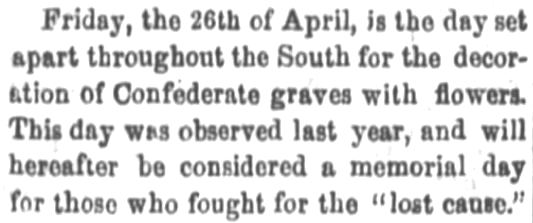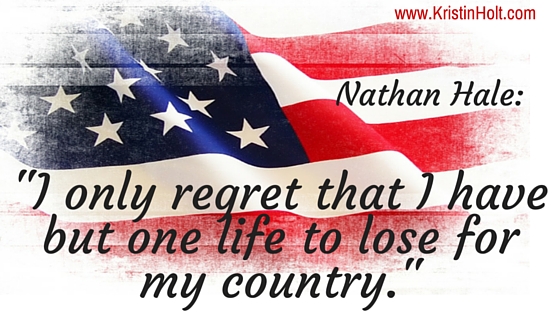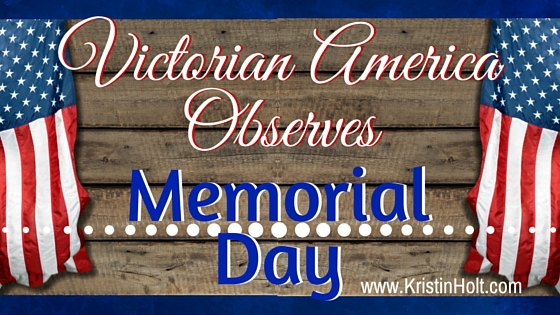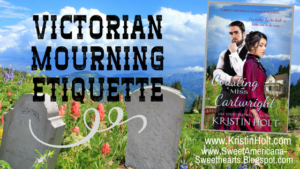Victorian America Observes Memorial Day
Victorian America Observes Memorial Day
.
The history of America’s Memorial Day, sometimes called Decoration Day, is rooted in the American Civil War. While the living have long remembered their deceased loved ones, the catastrophic loss of life through the many years of bloodshed brought about the desire to honor the fallen soldiers on both sides of the conflict.
.
What began as a proclamation by the Commander-in-Chief of the Grand Army of the Republic gradually became an observed holiday in most states in the Union. Time eventually healed some wounds and post World War I the observance was finally acknowledged on the same day by both the North and the South. Memorial Day is now a recognition of the deceased well beyond military service. Soldiers lost in battle in defense of the United States are honored and their sacrifices revered on Memorial Day.
.

.

.
“The 30th day of May, 1868, is designated for the purpose of strewing with flowers or otherwise decorating the graves of comrades who died in defense of their country during the late rebellion, and whose bodies now lie in almost every city, village, and hamlet church-yard in the land. In this observance no form of ceremony is prescribed, but posts and comrades will in their own way arrange such fitting services and testimonials of respect as circumstances may permit.”
.
.
HEADQUARTERS GRAND ARMY OF THE REPUBLIC,
.

.

.
“We are just past the memorial day in Richmond. On Saturday morning and afternoon a great procession of ladies, in carriages and on foot, took its way to Holywood Cemetery. The day was employed in decorating the graves of the Confederate dead with flowers. Signs of this commemoration are still seen among the beautiful walks and groves of Holywood, upon the monuments of the Gens. Stuart, Starke, Gracie, Pegram, and the vault in which rests the raider Morgan. The grave of “Little Joe Davis,” over which the boys and girls of Richmond have so recently placed a monument, was covered with pretty tributes.
.
“In all this there was, doubtless a spirit of boast mingled with much tenderness, especially so with the friends of the poor private soldiers. Our own soldiers, who died as bravely for freedom as these did for Slavery, have not been forgotten. Their graves should bloom of themselves; but it is well that the hands of patriot women have strewed them with the fragrant offerings of Summer. To the dead of both sides–“Rest in Peace”.”
.
~ New-York Tribune of New York, New York, on Wednesday, June 6, 1866
.
.

.

Announcement of Memorial Day date in Fort Wayne Daily Gazette, Fort Wayne Indiana, on April 20, 1867.
.

Decoration Day: Fishing instead of memorializing. National Republican of Washington, District of Columbia, May 15, 1877.
.

.
“…Another one of the new observances was Memorial Day, whose date was designated as May 30 by John A. Logan of the Grand Army of the Republic (but as April 26th by an unreconstructed band of Mississippi ladies) to honor the Civil War dead. The scene on Memorial Day was much the same in thousands of small towns across the United States. Typically the day began with a parade led by a brass band and the volunteer firemen hand-pulling their pumping engine. Following them were the Mexican War veterans and, for a few years at least, an occasional, shuffling old-timer from the War of 1812, and finally, splendid in their visored caps and coats, the Civil War veterans. At midday came the patriotic speeches. And afterward, while children raced underfoot, the elders gossiped over friend chicken, homemade pickles, and angel-food cake eaten on broad-planed tables set up on the town common.”
.
~ Prelude to the Century: 1870-1900 by the Editors of Time-Life Books, p 76.
.

.

.
The date of Decoration Day, as he [General John Logan, national commander of the Grand Army of the Republic] called it, was chosen because it wasn’t the anniversary of any particular battle.
.
On the first Decoration Day, General James Garfield made a speech at Arlington National Cemetery, and 5,000 participants decorated the graves of the 20,000 Union and Confederate soldiers buried there.
.
The first state to officially recognize the holiday was New York in 1873. By 1890 it was recognized by all of the northern states. The South refused to acknowledge the day, honoring their dead on separate days until after World War I (when the holiday changed from honoring just those who died fighting in the Civil War to honoring Americans who died fighting in any war).
.
It is now observed in almost every state on the last Monday in May with Congressional passage of the National Holiday Act of 1971. This helped ensure a three day weekend for Federal holidays, though several southern states have an additional separate day for honoring the Confederate war dead: January 19th in Texas; April 26th in Alabama, Florida, Georgia, and Mississippi; May 10th in South Carolina; and June 3rd (Jefferson Davis’s birthday) in Louisiana and Tennessee.
.
.

Twenty-five years after The War, “Methodist North” and “Methodist South” urged to unite. The Butte Daily Post of Butte, Montana, June 4, 1889.
.

Memorial Day program announced in The Hoxie Sentinel of Kenneth, KS on May 29, 1890. Note the basket dinner (picnic) and urge for the decorating of businesses houses.
.

.

.
Related Articles: Victorian American Holiday Observances
.
.
.
Updated April 2022
Copyright © 2016 Kristin Holt LC
Victorian America Observes Memorial Day Victorian America Observes Memorial Day

































